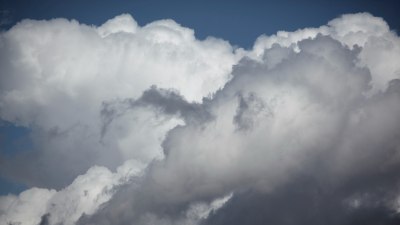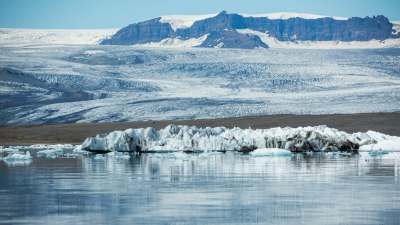What Happens When Clouds Collide: The Birth of a Storm
Explore the fascinating process of cloud collisions and how they lead to storm formation in nature.

Image by photogenia on Freepik
The Earth’s atmosphere is a complex and dynamic system, wherein clouds play a crucial role in the weather phenomena we experience daily. Among the various atmospheric events, the collision of clouds stands out as a significant factor in the formation of storms. Understanding this process can help us better appreciate the intricacies of weather patterns and their impact on our lives.
Clouds are essentially masses of water droplets or ice crystals suspended in the atmosphere, formed when moist air rises, cools, and condenses. The interaction of these clouds, particularly when they collide, is crucial to the development of severe weather events such as thunderstorms, hurricanes, and tornadoes. This article will delve into what happens when clouds collide, examining the physics behind this phenomenon and the subsequent birth of storms.
The Basics of Cloud Formation
Before delving into the collision of clouds, it is essential to understand the basics of cloud formation. Clouds form when warm, moist air rises in the atmosphere. As the air rises, it expands and cools. When the temperature of the air drops to its dew point, the water vapor condenses into tiny droplets, forming clouds. Different types of clouds form depending on factors like temperature, altitude, and humidity. For example, cumulus clouds are typically fluffy and white, indicating fair weather, while cumulonimbus clouds are tall and dark, often associated with thunderstorms.
Types of Clouds and Their Properties
Clouds can be classified into several categories: stratus, cumulus, cirrus, and nimbus, among others. Each type has distinct characteristics that influence weather conditions. Cumulus clouds, for instance, grow vertically and can develop into storm clouds under certain conditions. The properties of these clouds, including moisture content and temperature affect their interaction with one another during collisions.
The Collision Process
The collision of clouds occurs when two or more distinct air masses meet. The interaction can vary depending on the properties of the clouds involved. When warm, moist air rises and meets cooler, dryer air, the moisture from the warm air can condense, leading to cloud formation. When two clouds collide, several processes occur, including the transfer of energy, moisture, and turbulent mixing. The collision can cause droplets to merge, creating larger droplets that can fall as precipitation. This process is known as coalescence, and it is crucial for rain formation.
The Role of Temperature and Humidity
Temperature and humidity are critical factors that influence how clouds interact. For instance, if a warm, humid air mass collides with a cold, dry air mass, the resulting temperature difference can result in significant turbulence. This turbulence enhances the condensation process, leading to the rapid growth of storm clouds. Additionally, high humidity levels in the warmer air contribute to the development of heavy precipitation as the clouds grow and collide.
Condensation and Precipitation
As clouds collide, the condensation process intensifies. When water vapor condenses onto existing droplets, it causes them to grow larger. This growth continues until the droplets are heavy enough to overcome the upward force of the air currents. When this happens, they fall as precipitation. Depending on the temperature, this precipitation can manifest as rain, snow, sleet, or hail. The type of precipitation is heavily influenced by the temperature of the air mass and the altitude at which the collision occurs.
Thunderstorm Development
One of the most dramatic outcomes of cloud collisions is the formation of thunderstorms. When cold and warm air collide, the resultant instability can lead to strong updrafts and downdrafts. As these air currents interact, they can create towering cumulonimbus clouds that extend high into the atmosphere. At this stage, the storm begins to develop, featuring characteristic thunder and lightning.
The Role of Updrafts and Downdrafts
Updrafts play a vital role in storm development, transporting warm, moist air upward, while downdrafts bring cooler, drier air downwards. The collision of clouds can enhance these updrafts and downdrafts, contributing to the intensity and severity of the storm. In thunderstorms, the cycles of updrafts and downdrafts create the potential for severe weather, including heavy rainfall, hail, and tornadoes.
Formation of Severe Weather
When cloud collisions lead to a significant build-up of energy within a storm system, severe weather events can occur. Tornadoes, for example, often form within supercells—large storms characterized by rotating updrafts. The collision of clouds in these systems generates powerful winds and creates conditions conducive to tornado formation. Understanding this process allows meteorologists to issue timely warnings, helping to mitigate the impact of such events on communities.
The Importance of Research
Research into cloud collisions and their role in storm formation is essential for improving weather forecasting models. Scientists use advanced radar technology and satellite imagery to study how clouds interact in real-time. By analyzing this data, forecasters can enhance their understanding of storm development, leading to more accurate predictions. Improved forecasting helps communities prepare for severe weather, reducing potential damage and increasing safety.
Global Implications of Cloud Collisions
The collision of clouds and the storms they produce have significant global implications. Changes in storm patterns can impact agriculture, water supplies, and ecosystems. For instance, increased frequency and intensity of storms in certain regions can lead to flooding, soil erosion, and habitat destruction. Understanding the dynamics of cloud interactions is crucial for addressing climate change and its effects on global weather patterns.
In conclusion, the collision of clouds is a fundamental process in meteorology that underpins storm formation. The intricate dance between warm and cold air masses, accompanied by turbulence and condensation, results in a range of weather phenomena, from gentle rain to severe thunderstorms. By studying these interactions, scientists can improve weather prediction models and understand the broader implications of changing climate patterns. The next time you witness a storm, remember that it all began with the intersection of clouds—a beautiful yet powerful display of nature’s forces.











